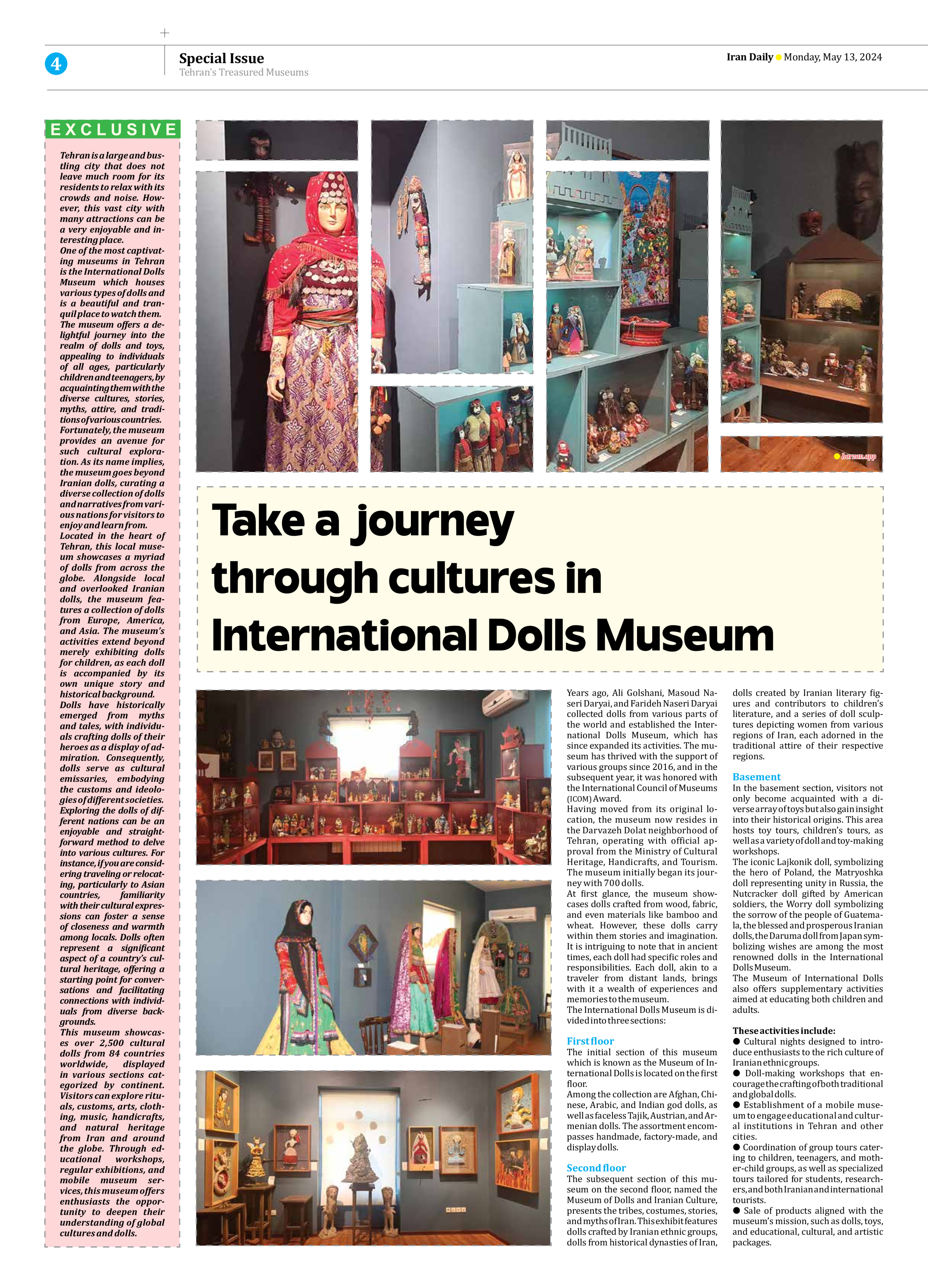
Take a journey through cultures in International Dolls Museum
Years ago, Ali Golshani, Masoud Naseri Daryai, and Farideh Naseri Daryai collected dolls from various parts of the world and established the International Dolls Museum, which has since expanded its activities. The museum has thrived with the support of various groups since 2016, and in the subsequent year, it was honored with the International Council of Museums (ICOM) Award.
Having moved from its original location, the museum now resides in the Darvazeh Dolat neighborhood of Tehran, operating with official approval from the Ministry of Cultural Heritage, Handicrafts, and Tourism. The museum initially began its journey with 700 dolls.
At first glance, the museum showcases dolls crafted from wood, fabric, and even materials like bamboo and wheat. However, these dolls carry within them stories and imagination. It is intriguing to note that in ancient times, each doll had specific roles and responsibilities. Each doll, akin to a traveler from distant lands, brings with it a wealth of experiences and memories to the museum.
The International Dolls Museum is divided into three sections:
First floor
The initial section of this museum which is known as the Museum of International Dolls is located on the first floor.
Among the collection are Afghan, Chinese, Arabic, and Indian god dolls, as well as faceless Tajik, Austrian, and Armenian dolls. The assortment encompasses handmade, factory-made, and display dolls.
Second floor
The subsequent section of this museum on the second floor, named the Museum of Dolls and Iranian Culture, presents the tribes, costumes, stories, and myths of Iran. This exhibit features dolls crafted by Iranian ethnic groups, dolls from historical dynasties of Iran, dolls created by Iranian literary figures and contributors to children’s literature, and a series of doll sculptures depicting women from various regions of Iran, each adorned in the traditional attire of their respective regions.
Basement
In the basement section, visitors not only become acquainted with a diverse array of toys but also gain insight into their historical origins. This area hosts toy tours, children’s tours, as well as a variety of doll and toy-making workshops.
The iconic Lajkonik doll, symbolizing the hero of Poland, the Matryoshka doll representing unity in Russia, the Nutcracker doll gifted by American soldiers, the Worry doll symbolizing the sorrow of the people of Guatemala, the blessed and prosperous Iranian dolls, the Daruma doll from Japan symbolizing wishes are among the most renowned dolls in the International Dolls Museum.
The Museum of International Dolls also offers supplementary activities aimed at educating both children and adults.
These activities include:
● Cultural nights designed to introduce enthusiasts to the rich culture of Iranian ethnic groups.
● Doll-making workshops that encourage the crafting of both traditional and global dolls.
● Establishment of a mobile museum to engage educational and cultural institutions in Tehran and other cities.
● Coordination of group tours catering to children, teenagers, and mother-child groups, as well as specialized tours tailored for students, researchers, and both Iranian and international tourists.
● Sale of products aligned with the museum’s mission, such as dolls, toys, and educational, cultural, and artistic packages.







